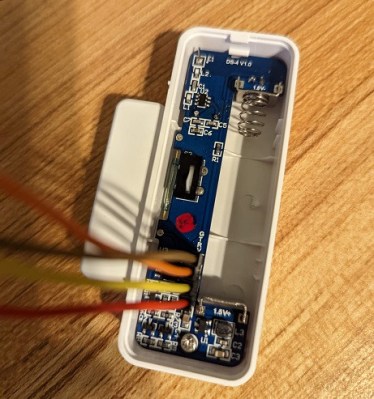
It’s an unfortunate reality these days that if you see a cheap piece of consumer electronics, there’s a good chance its only cheap because it’s designed to lock you into some ecosystem where you’ll either end up paying a subscription, or worse, have your personal information sold behind your back. One of the best tools we have against these sort of anti-consumer practices is the development of open source firmware replacements that put control of the device into the hands of the community, rather than a corporation.
Now, thanks to the work of [Jonathan Armstrong] we have such a firmware for the 433 MHz magnetic door and window sensors that you can pick up on AliExpress for $4 USD a piece. The new firmware not only ensures you can use these sensors with a wide array of receivers, but adds a number of new features over their stock configuration.

In addition to tweaking the transmission protocol so it can be picked up with existing open source projects such as the popular rc_switch library, [Jonathan] has also added a periodic heartbeat signal that can be used to verify the sensor is still online. The new firmware will also transmit the status of the sensor’s internal tamper switch, alerting you to the possibility that somebody is trying to physically manipulate the sensor.
He’s got more ideas for features, but tells us he could use some assistance from folks experienced with the 8051 architecture. [Jonathan] says the development tools [Vincent Defert] put together for the STC15 microcontroller used in the sensors got him on the right track, but he’s struggling to use emulated EEPROM as code space. If he could figure that out, it would pave the way for more capabilities such as connecting additional sensors to the board.
Replacement firmware projects can not only free a device from the proprietary ecosystem it was designed for, but open up a whole new world of possibilities. One of our favorite examples is the custom firmware [Aaron Christophel] developed for Xiaomi’s Bluetooth thermometers, which took a cheap vendor-locked gadget and turned it into a smart home powerhouse.
0 Commentaires